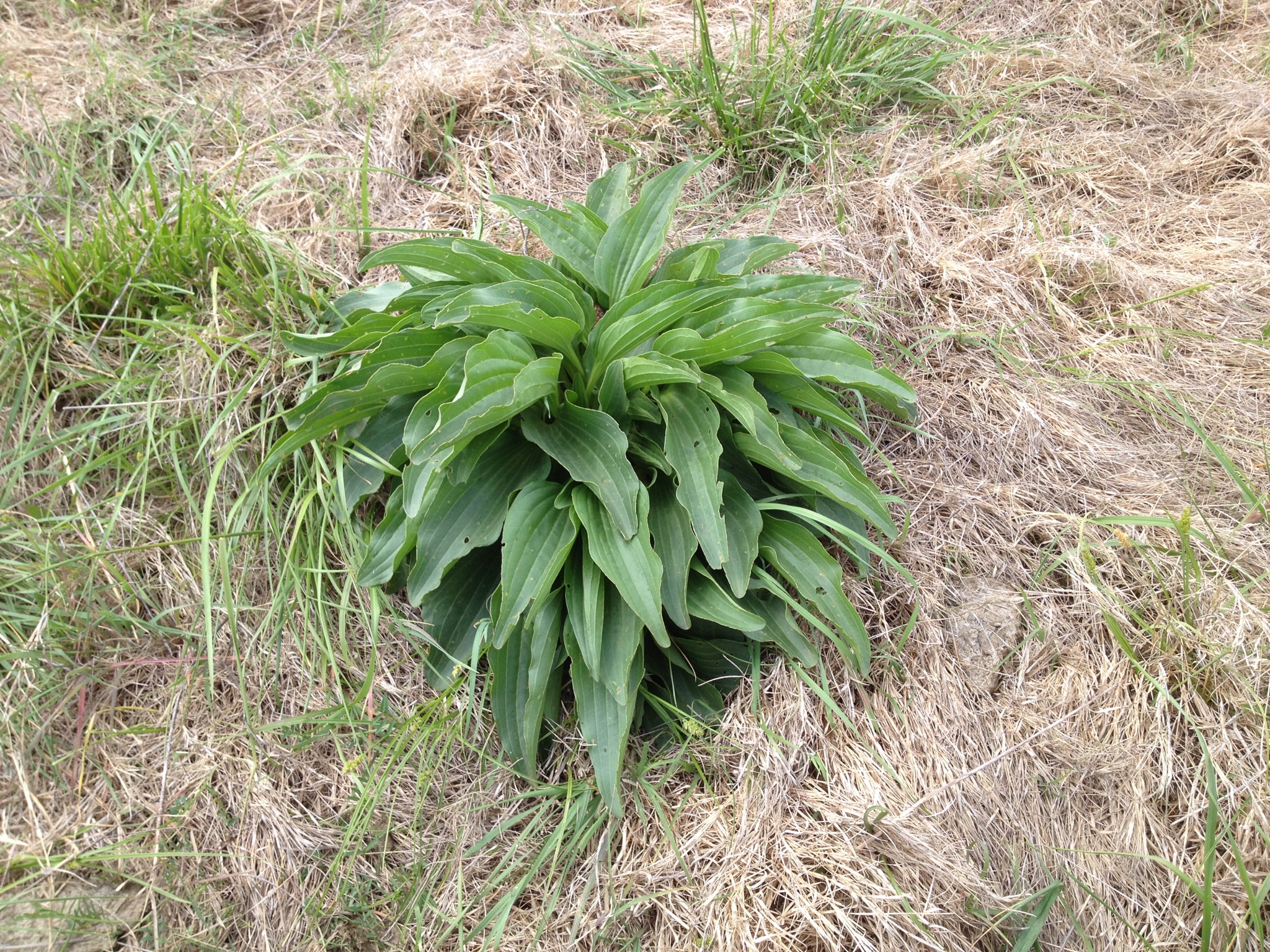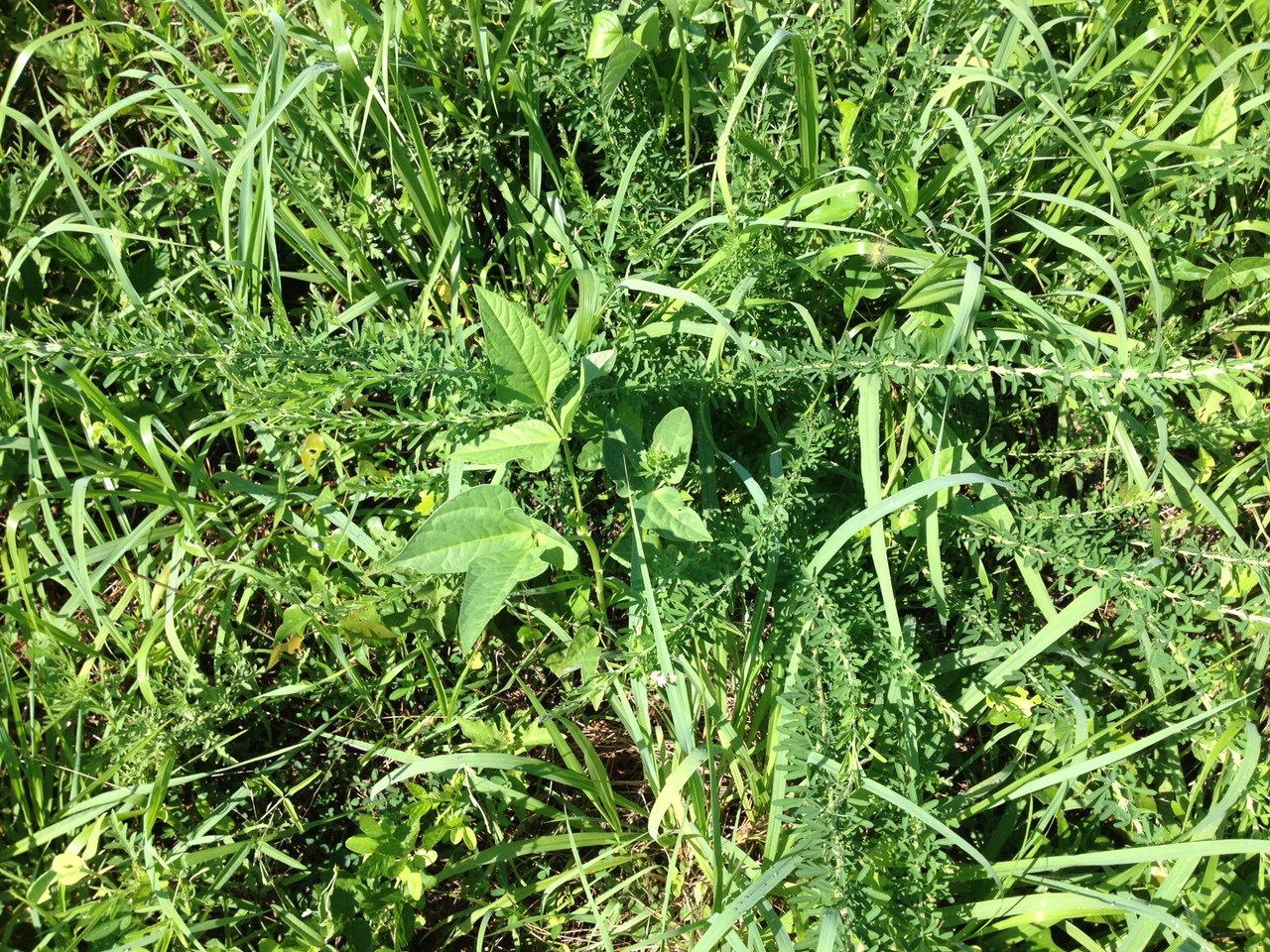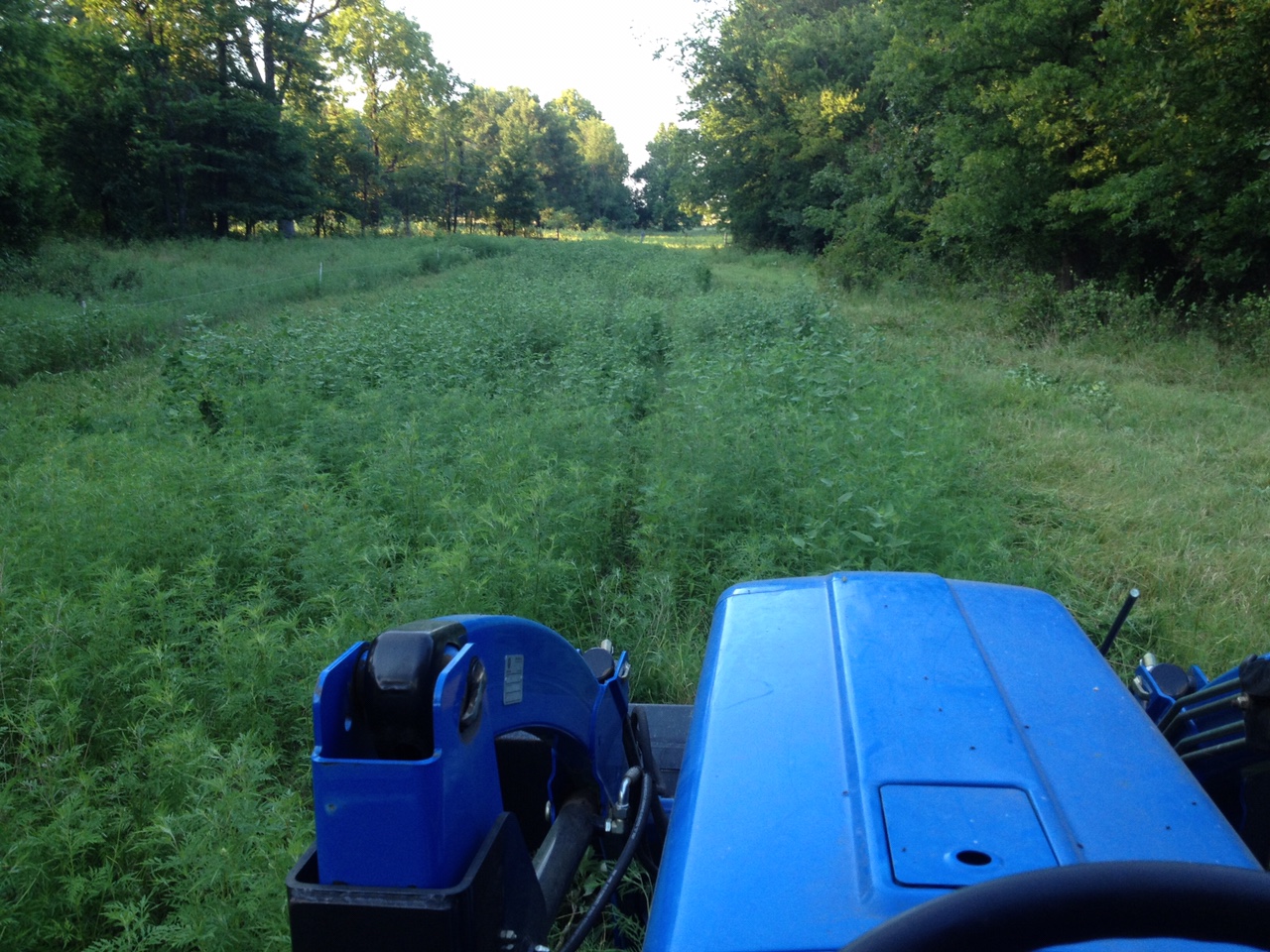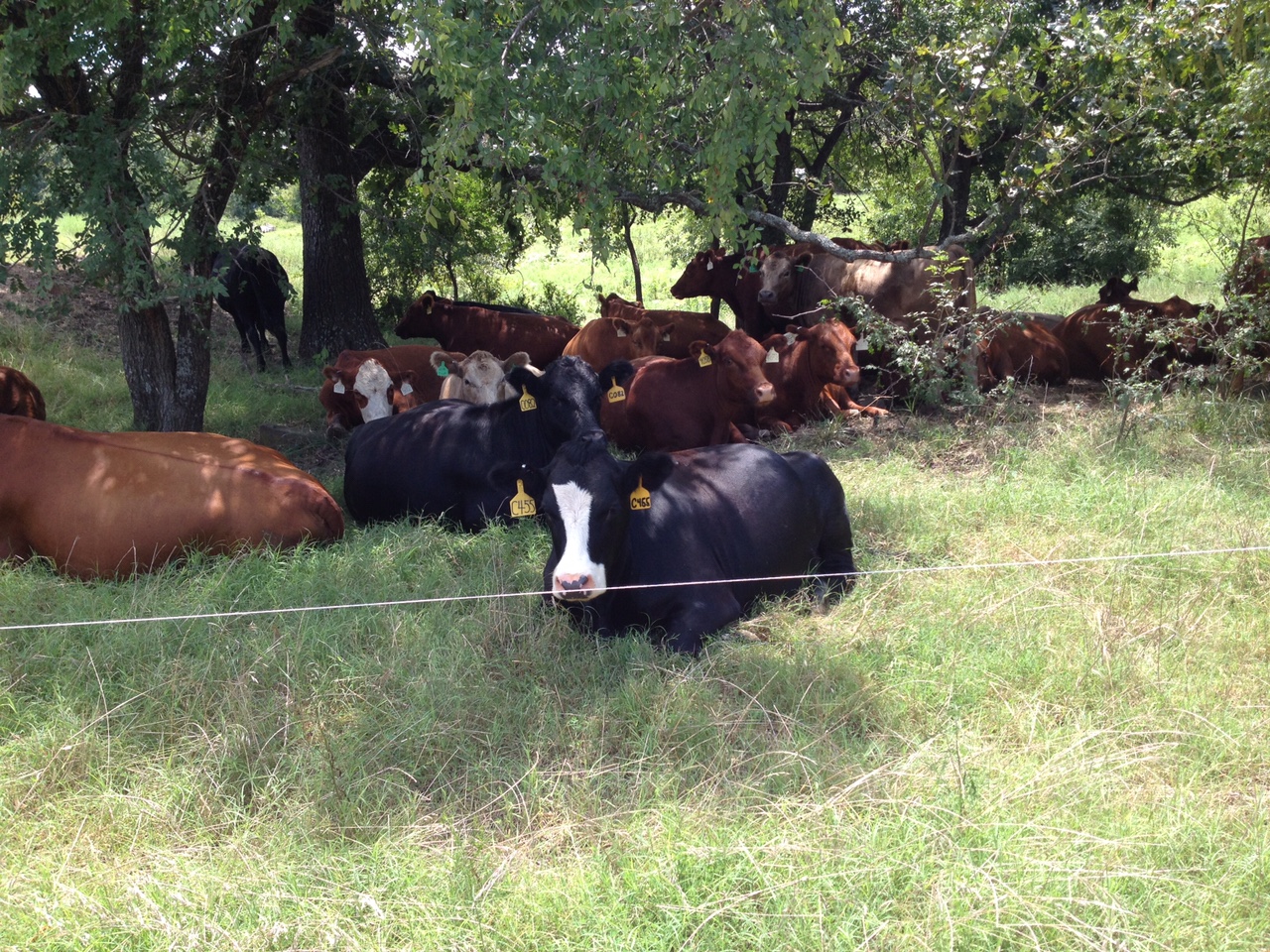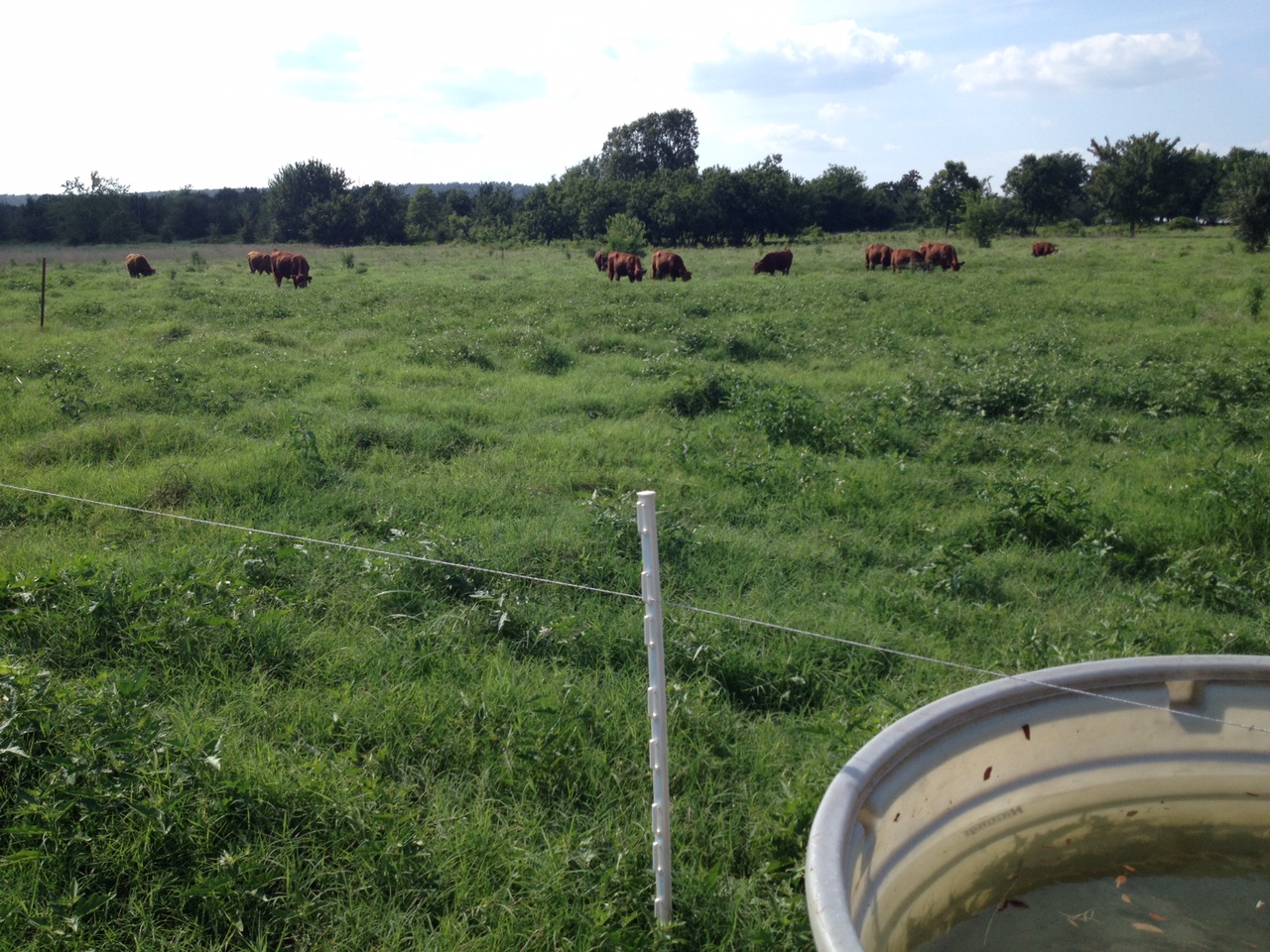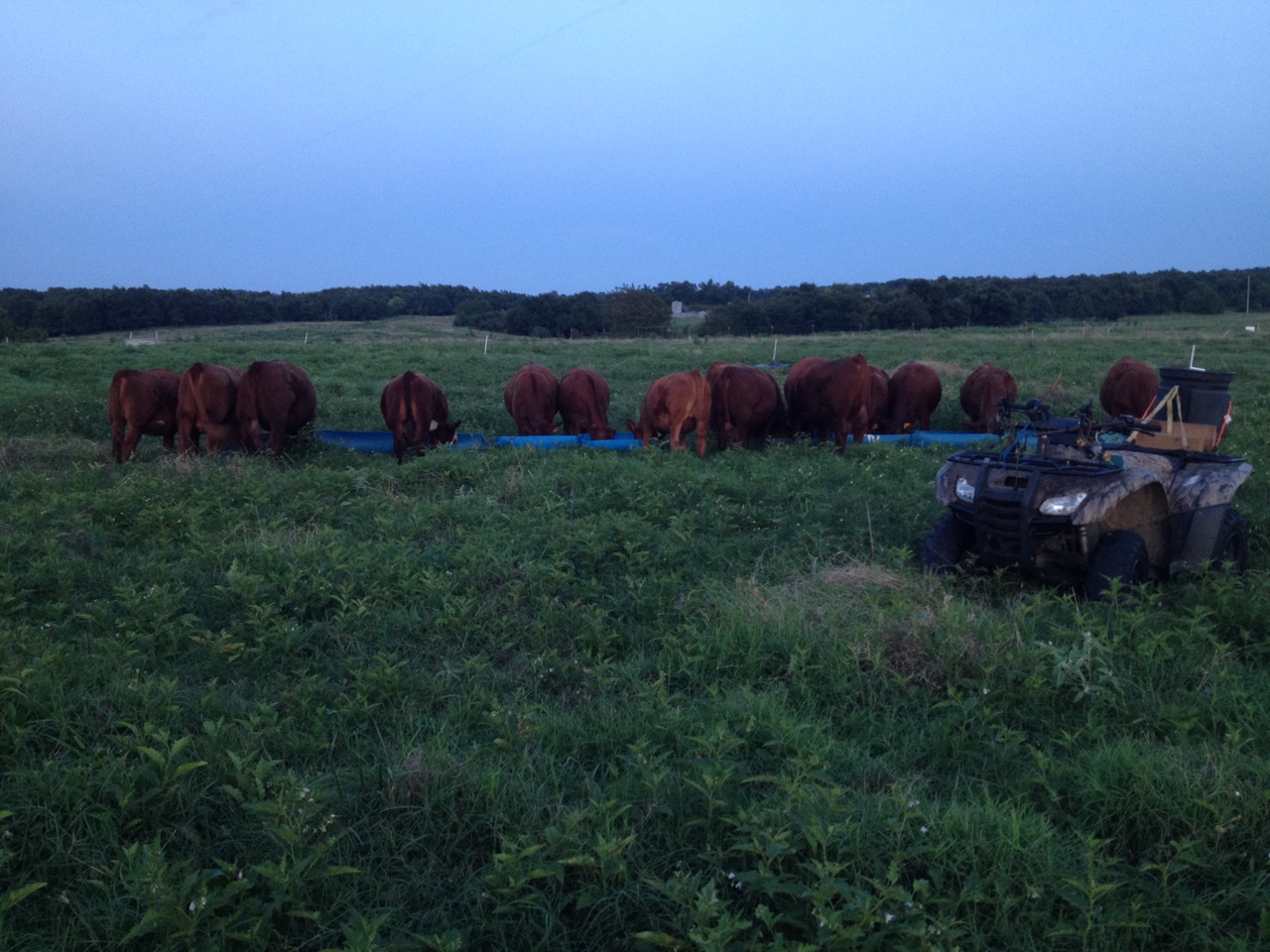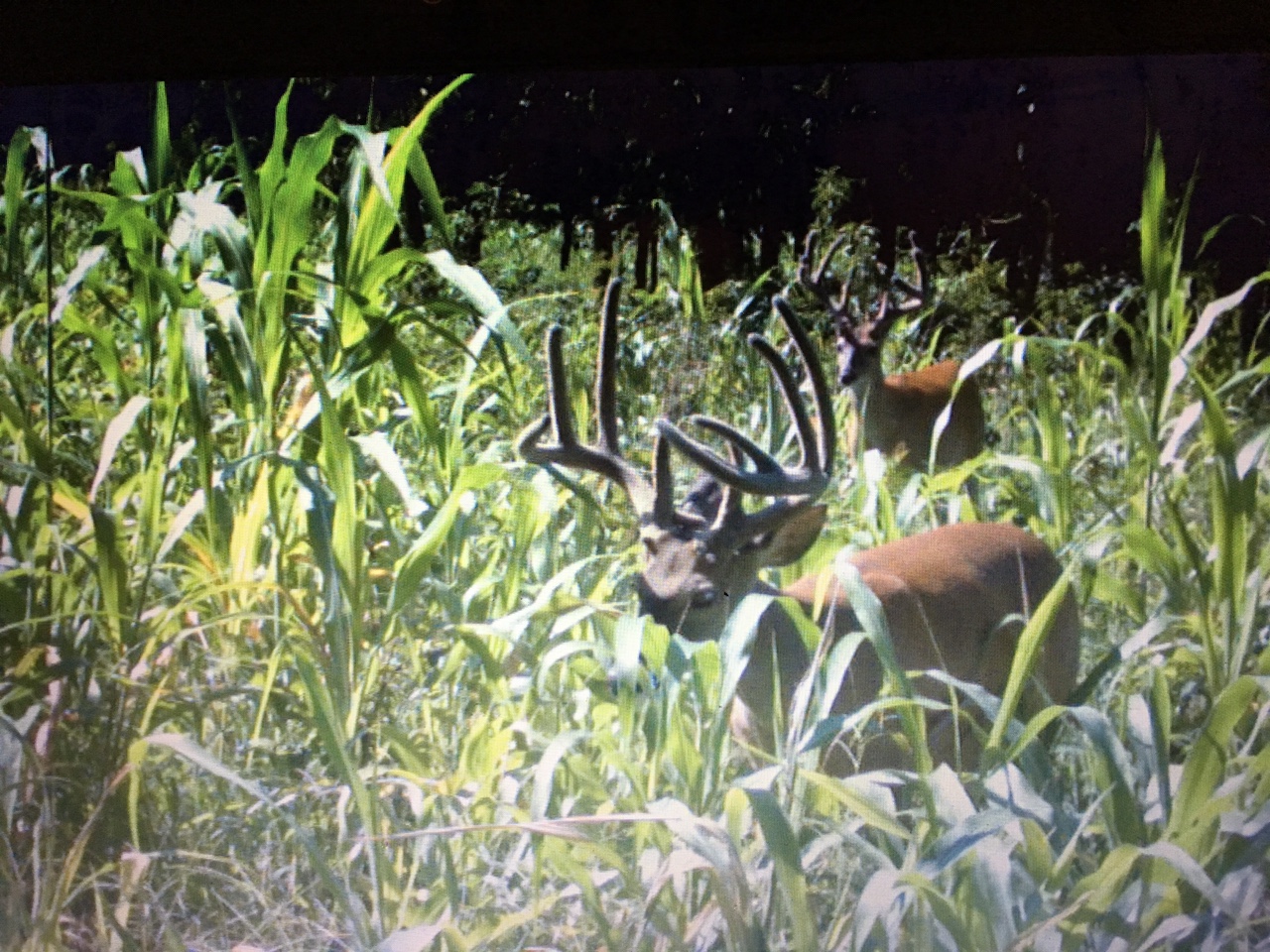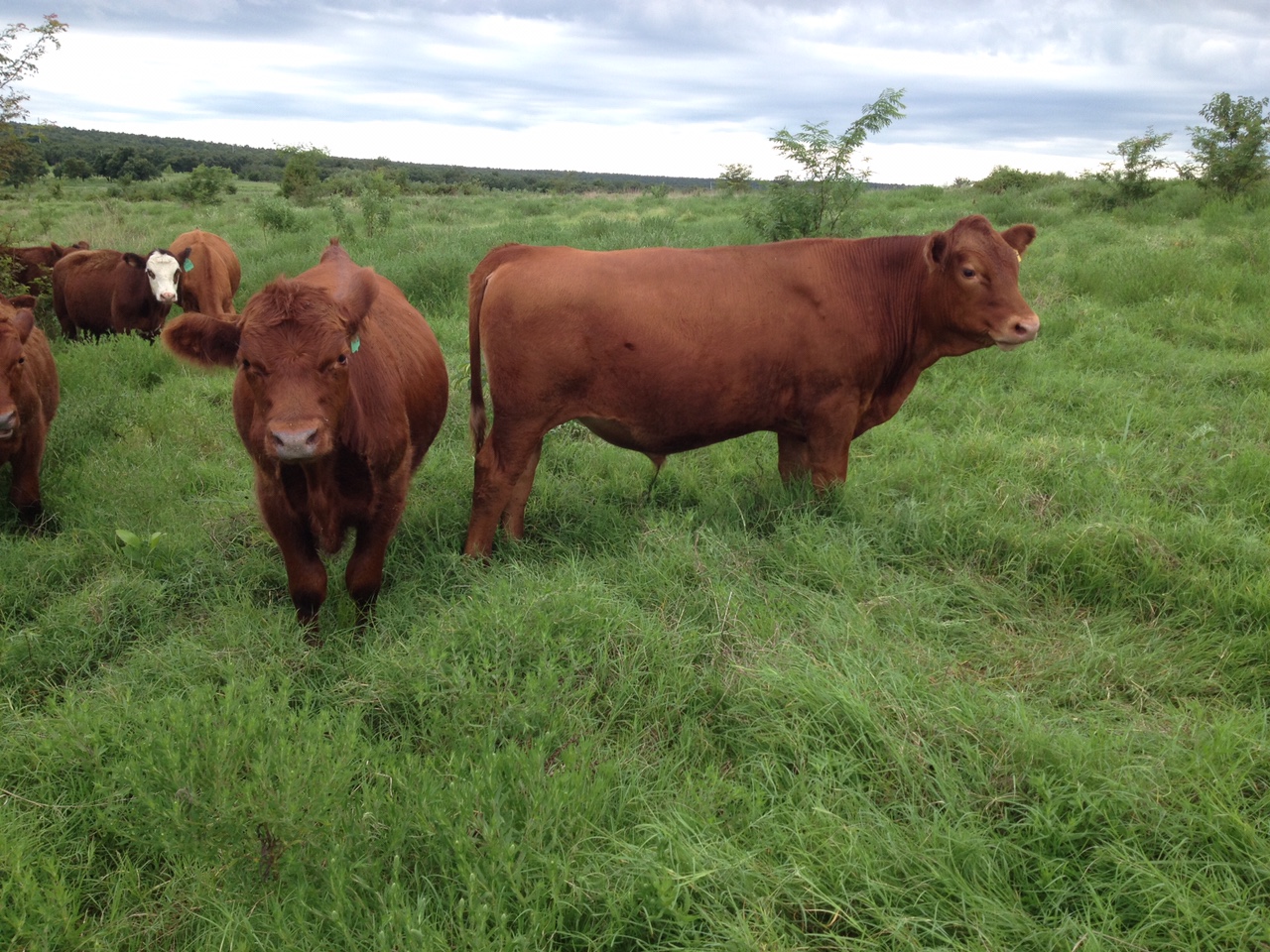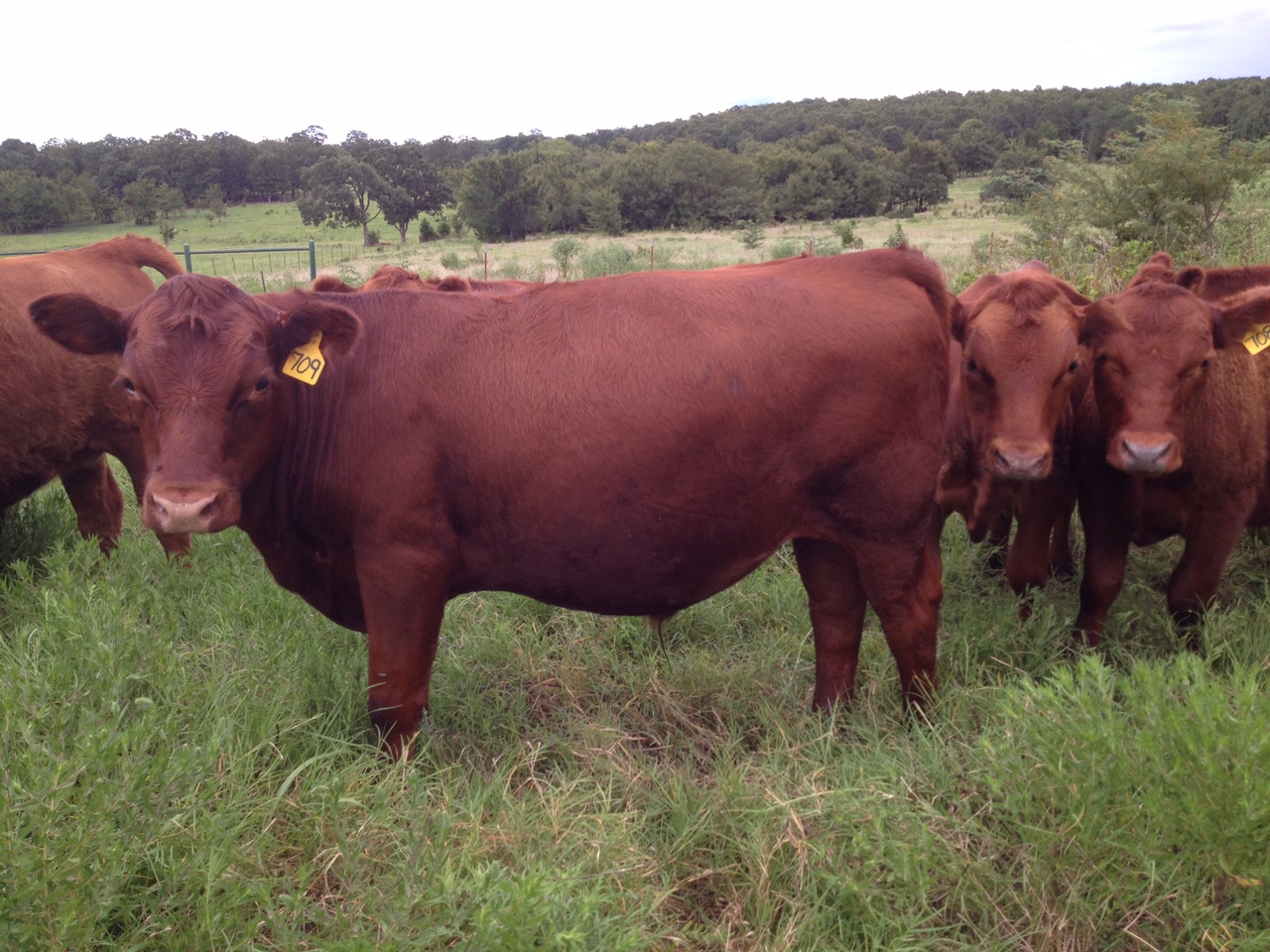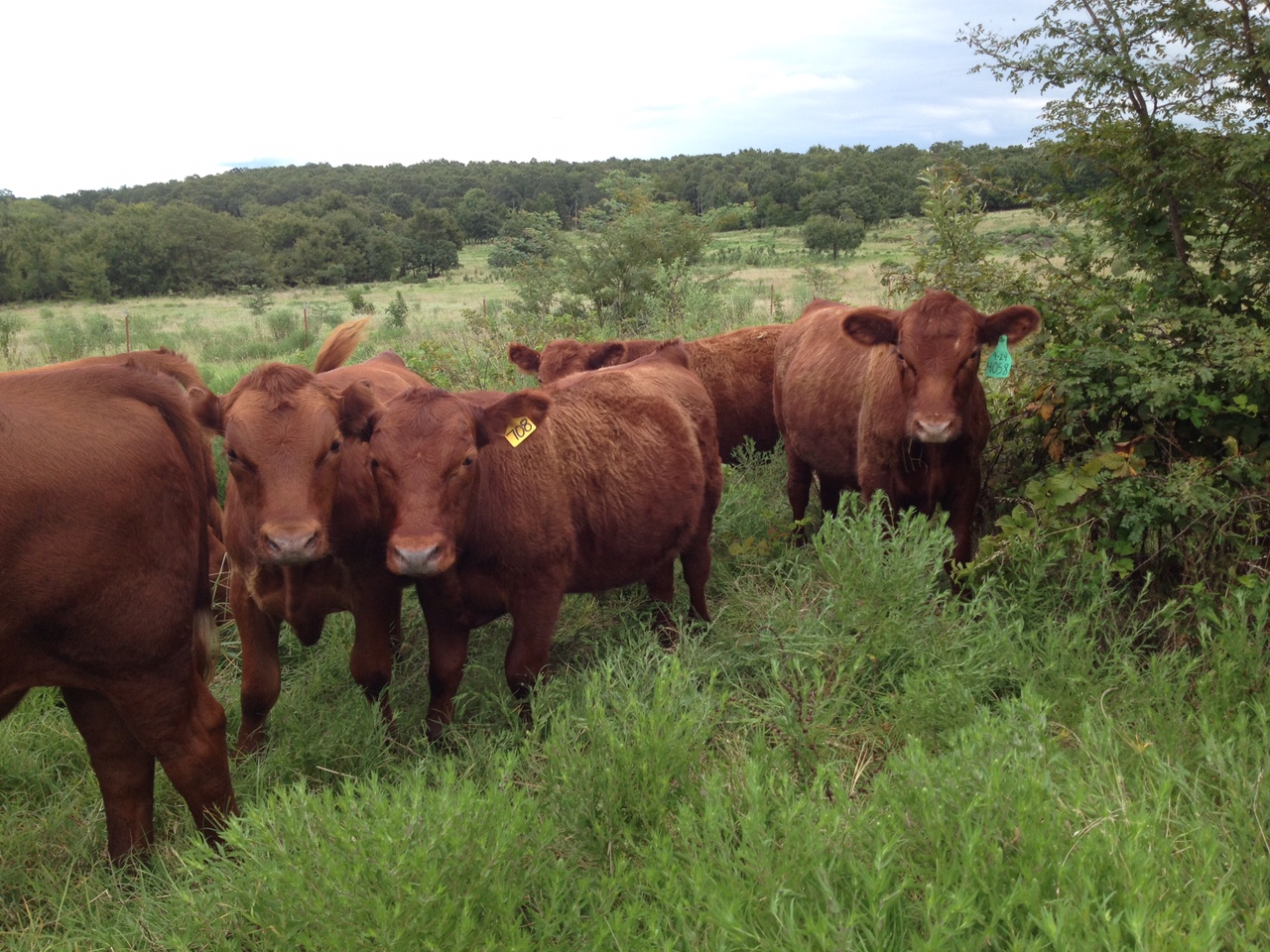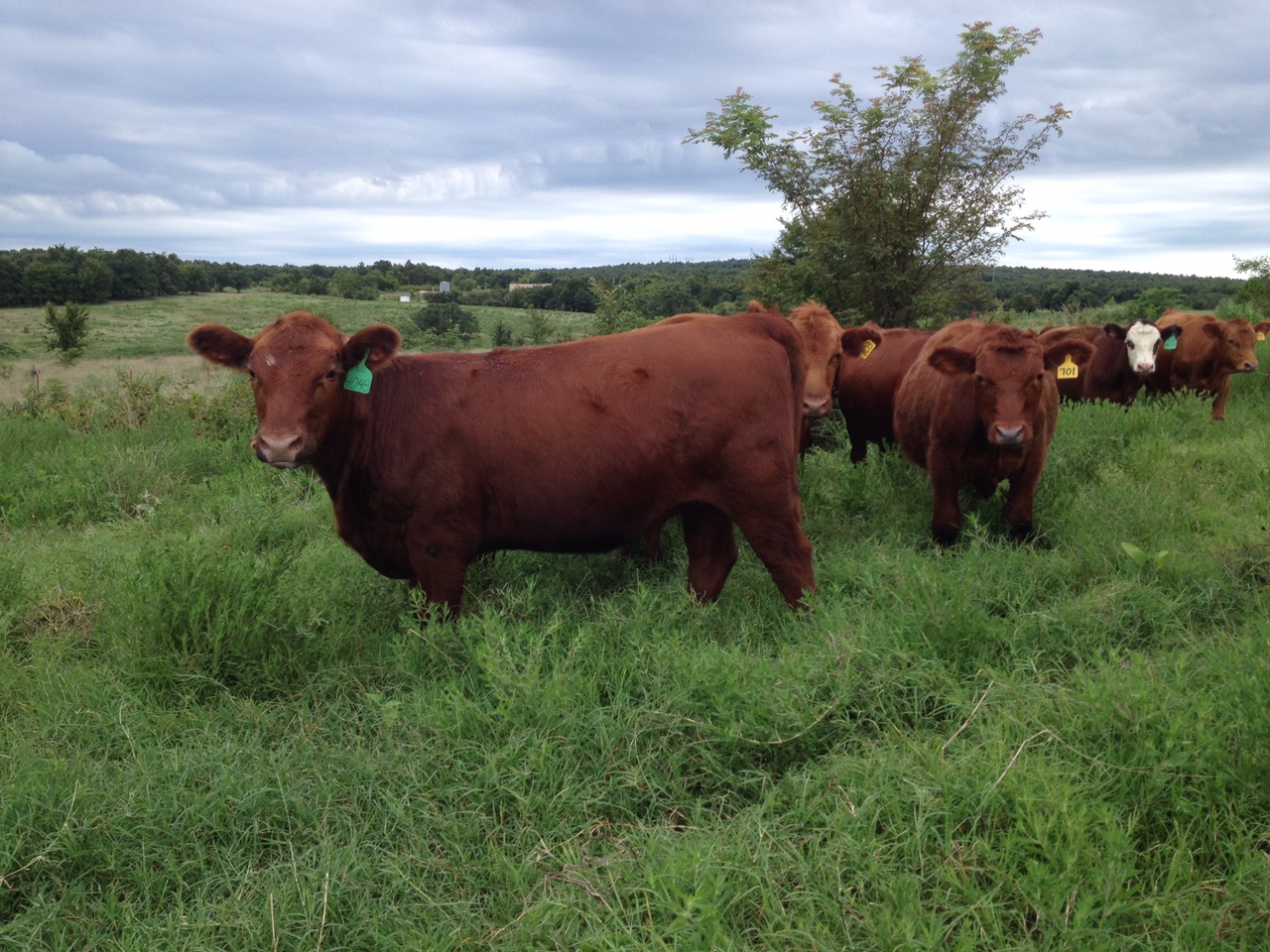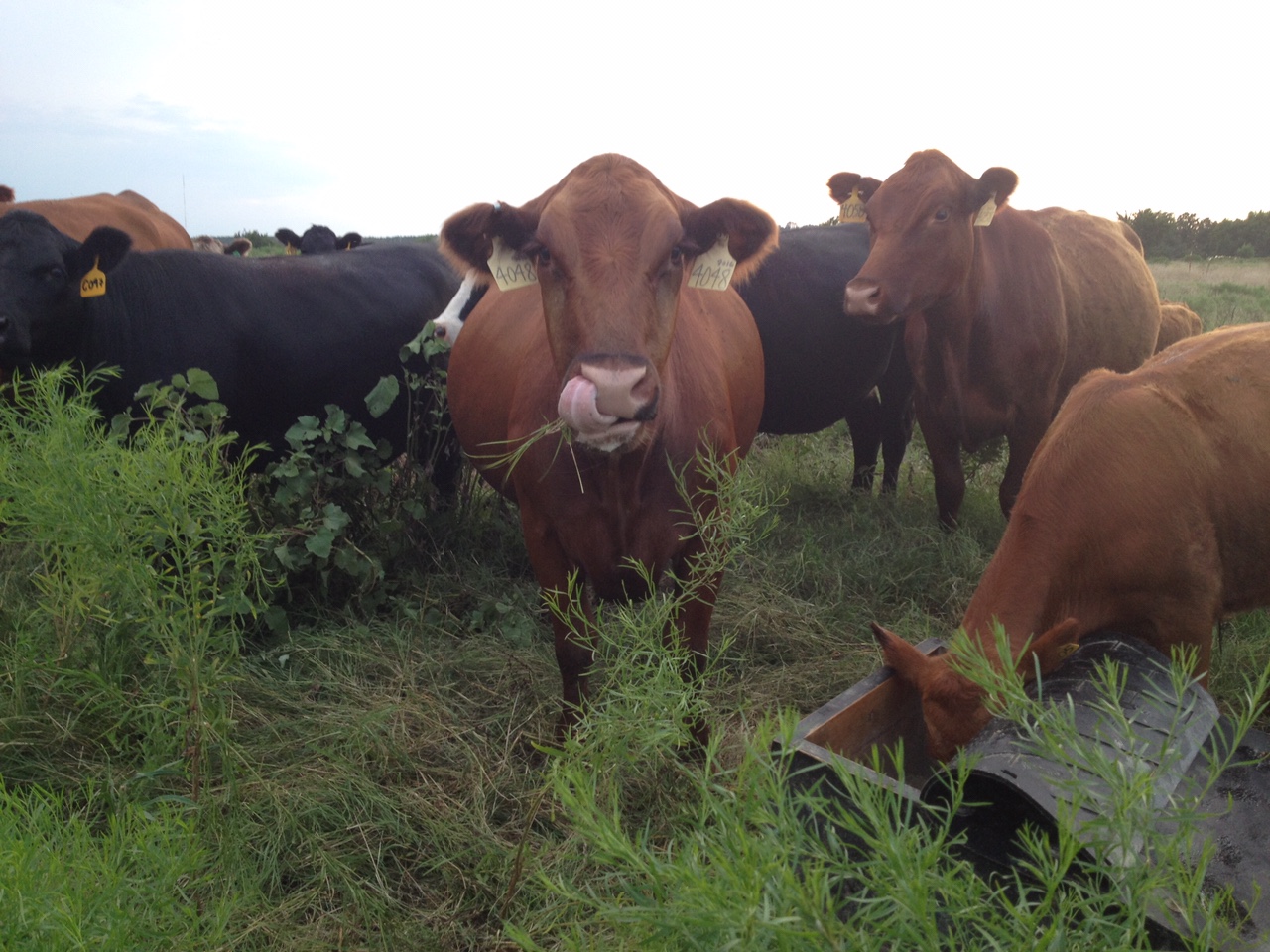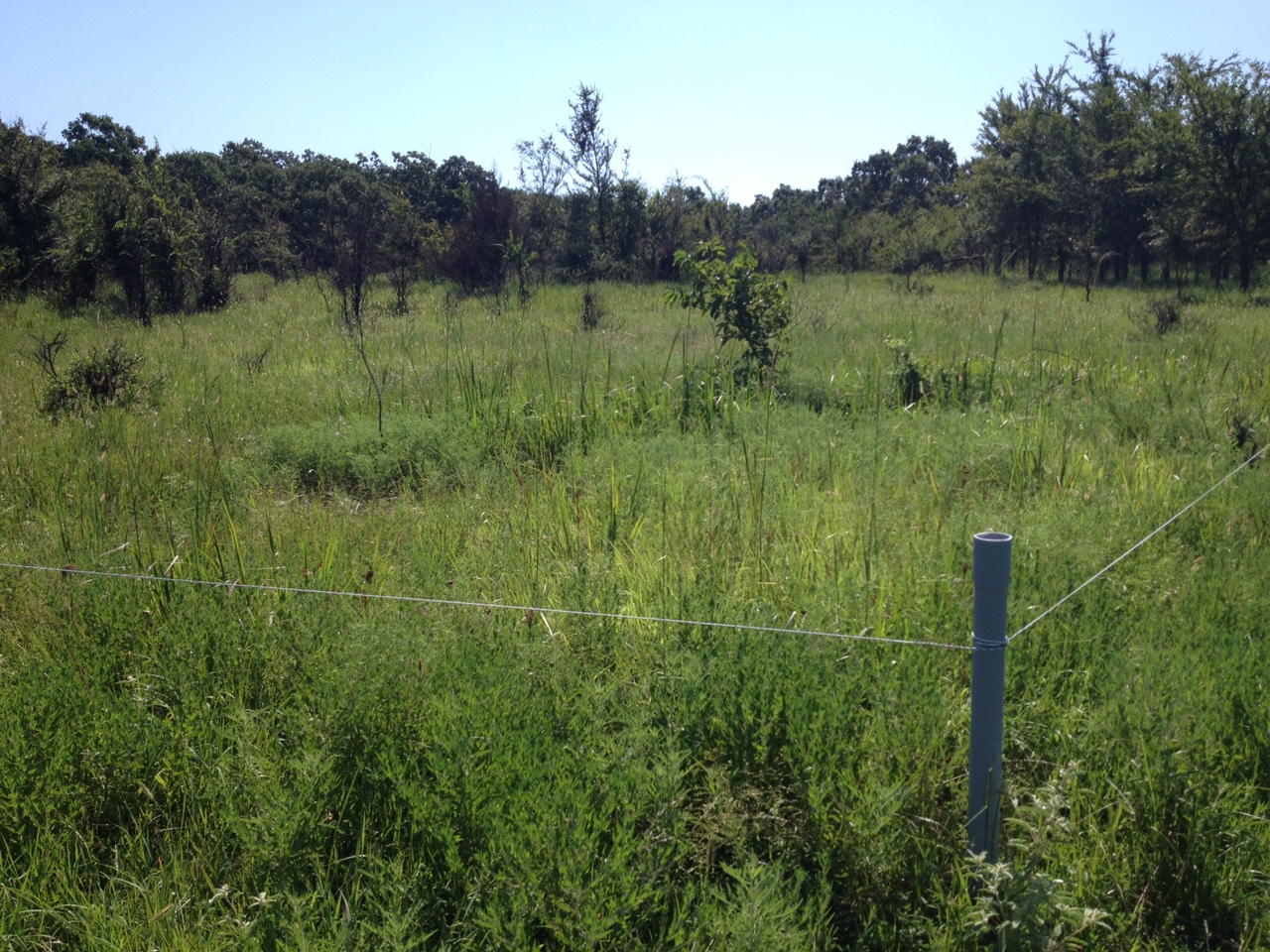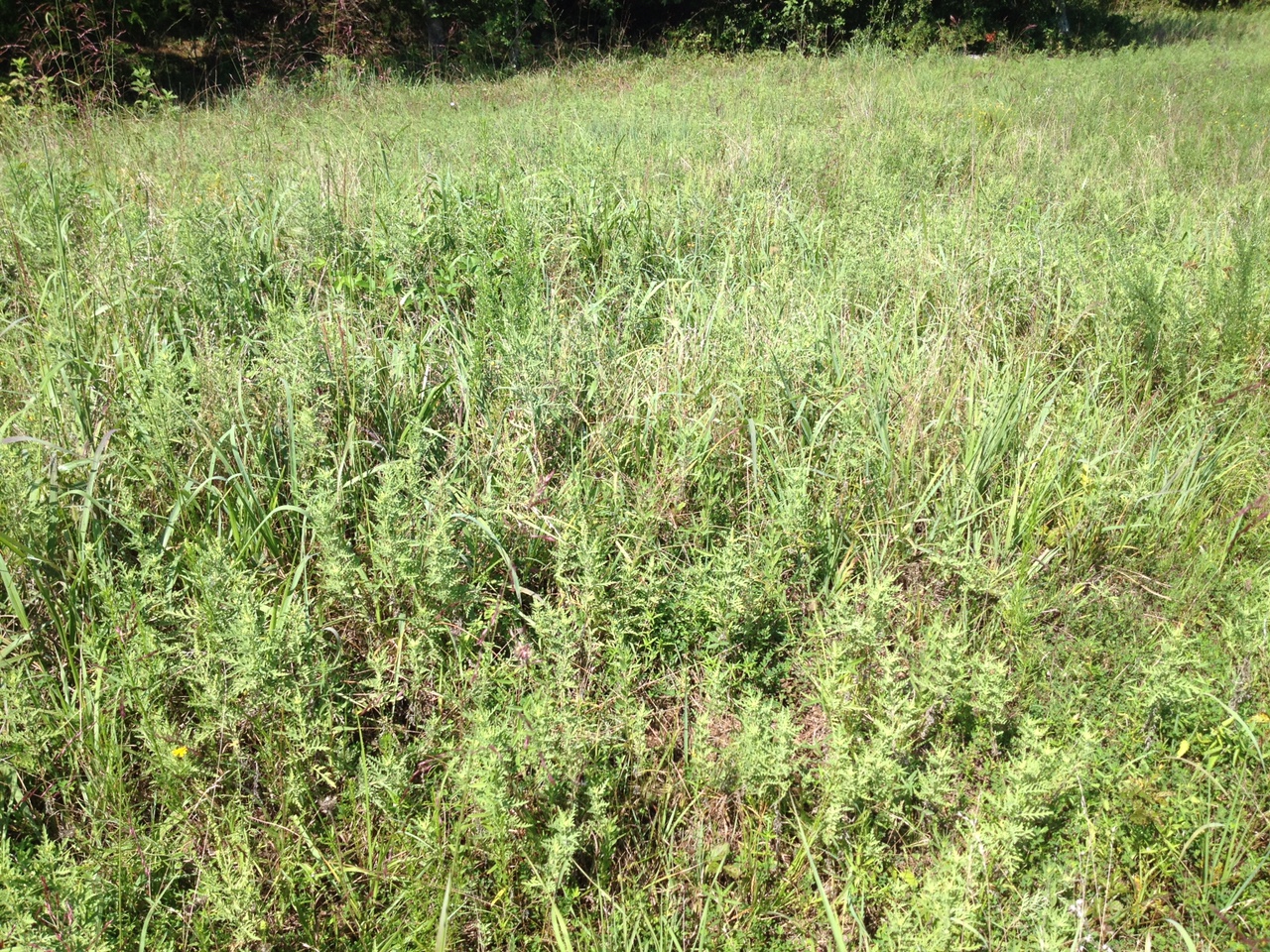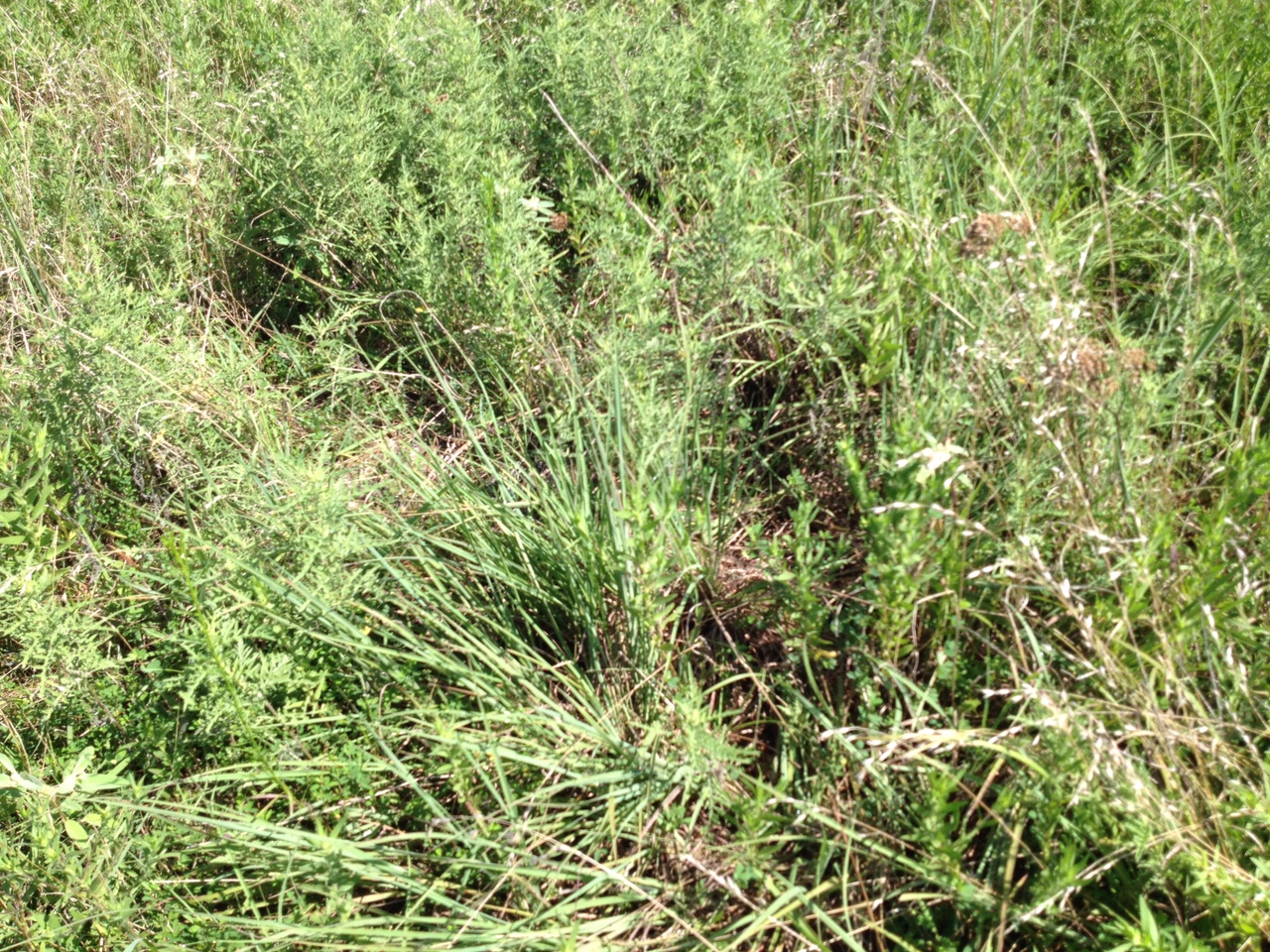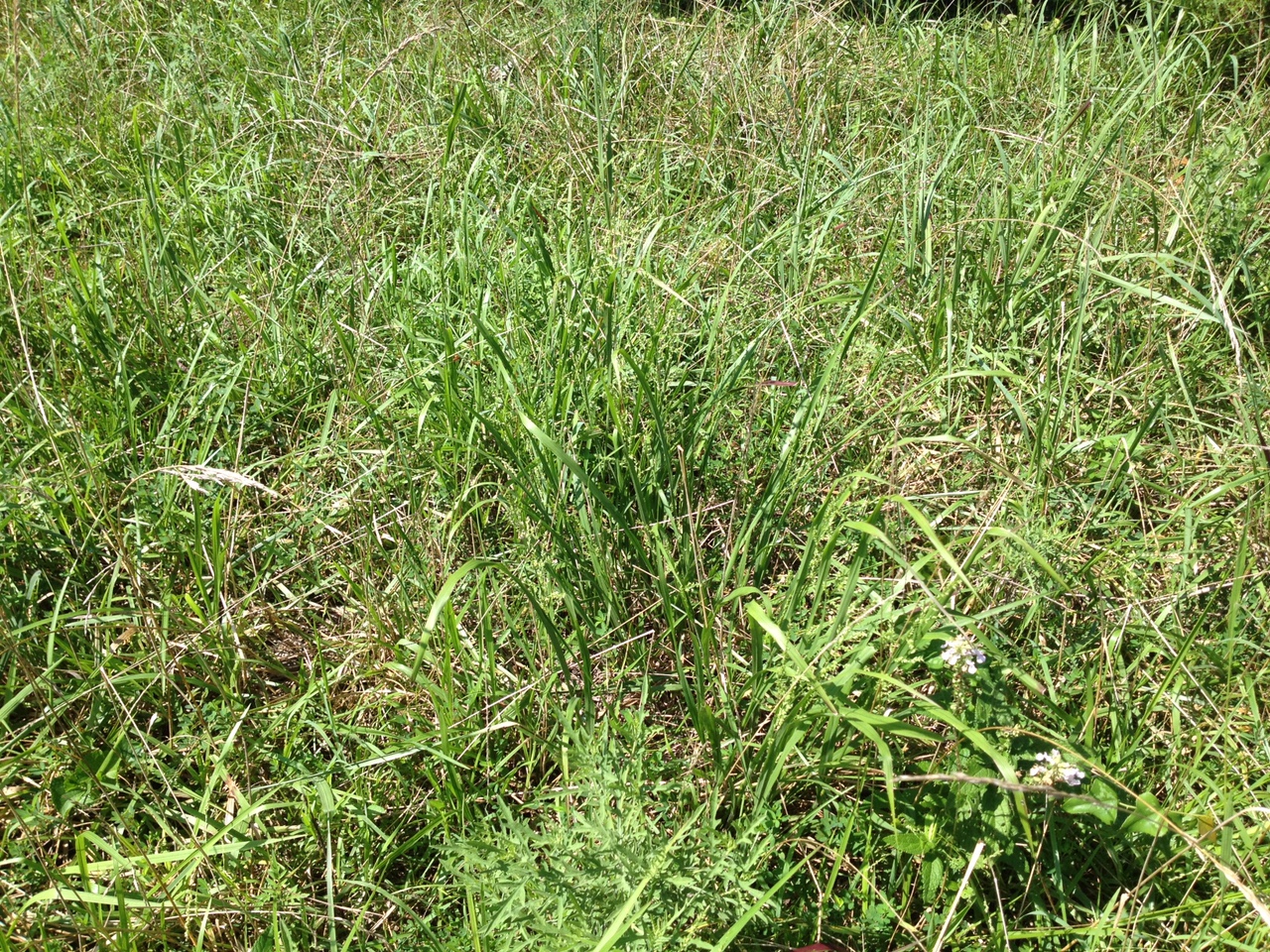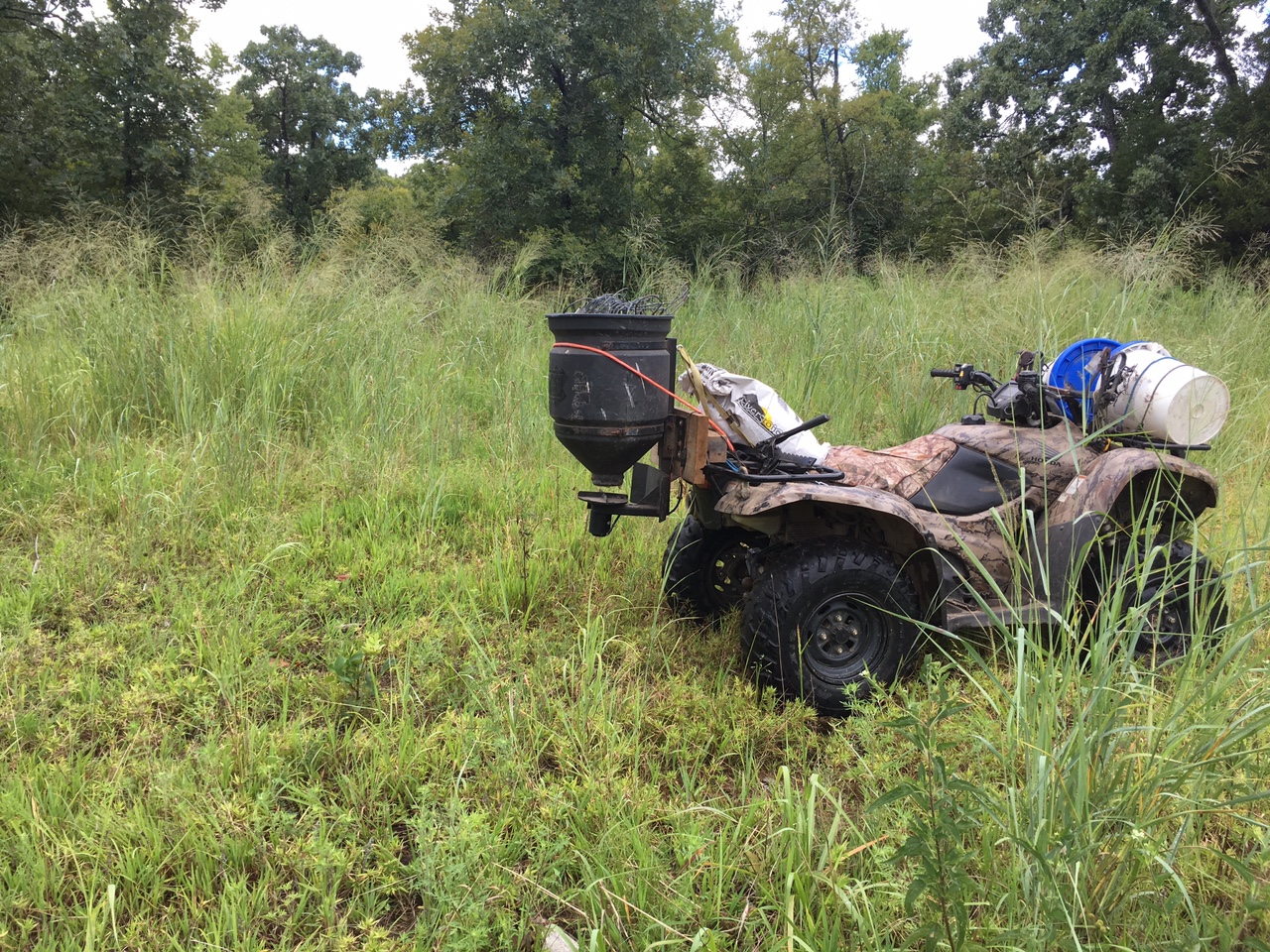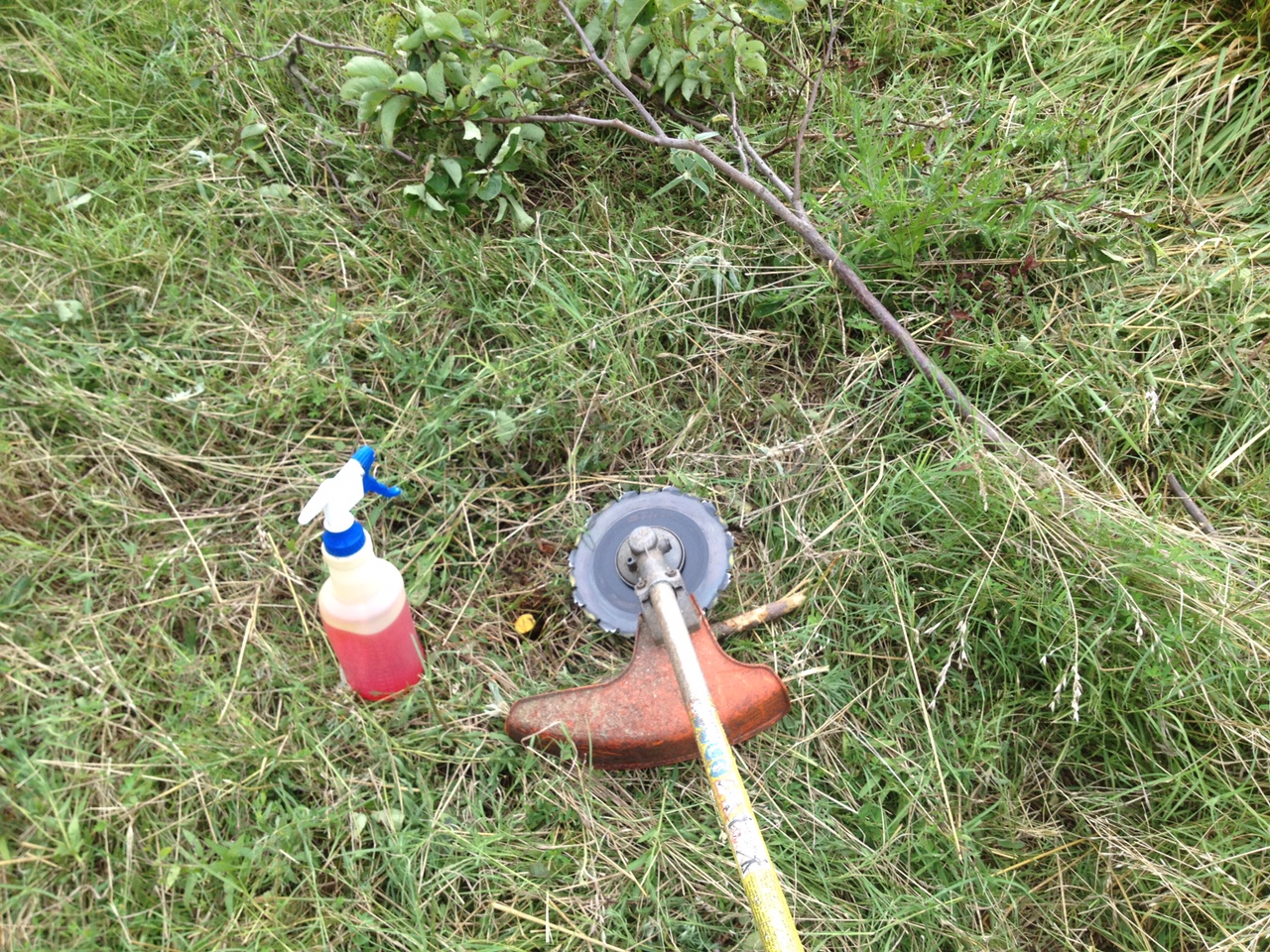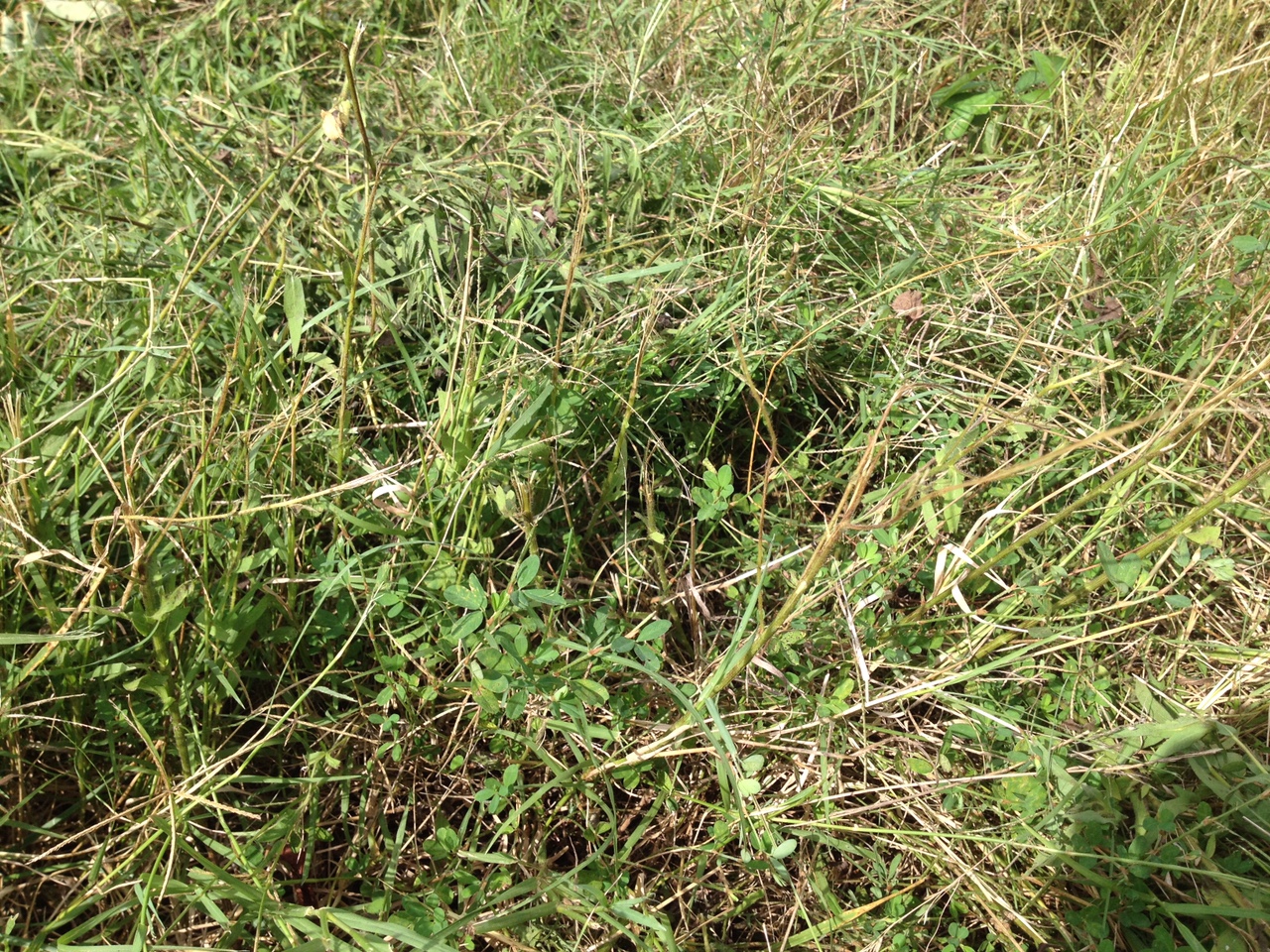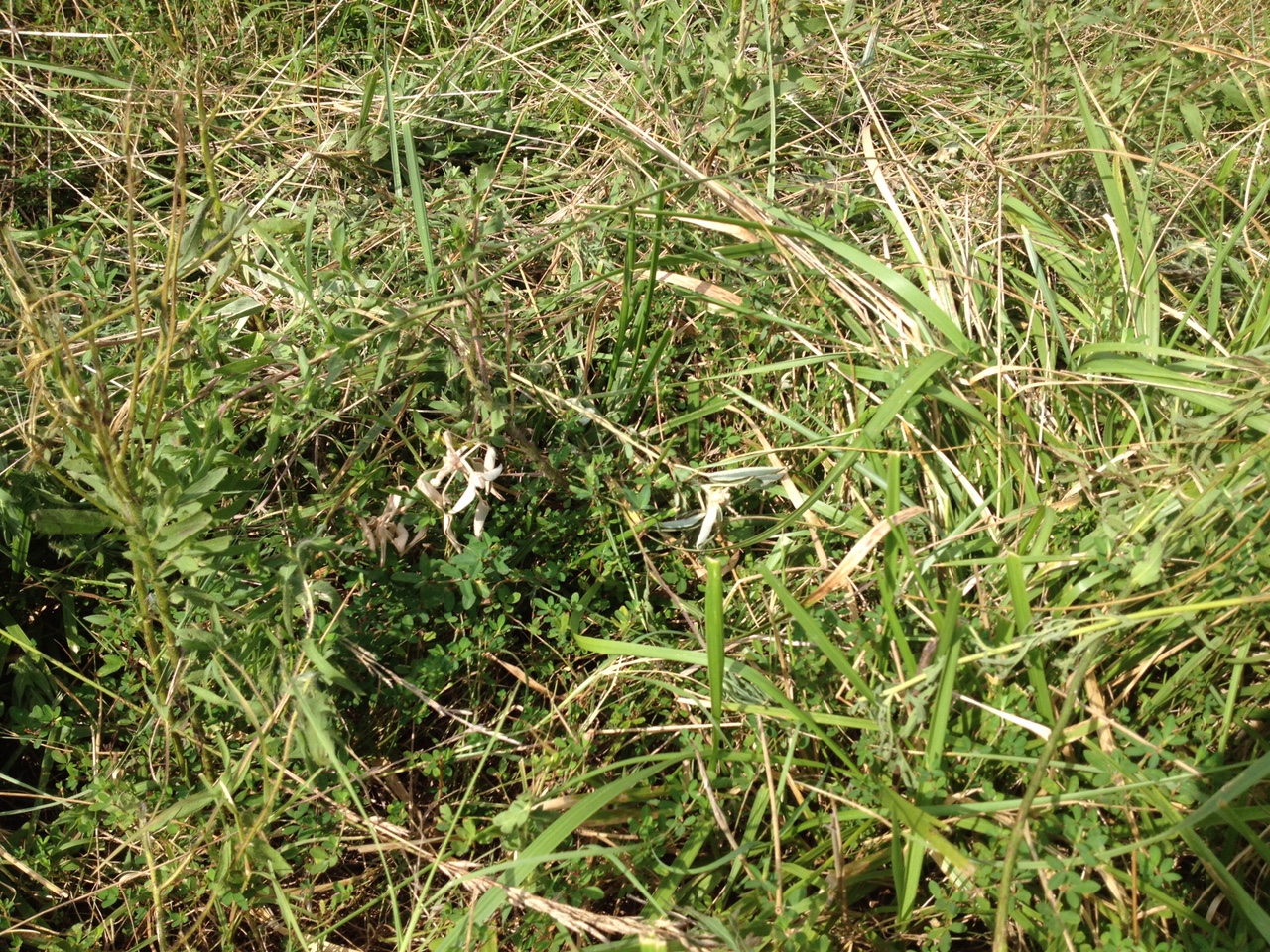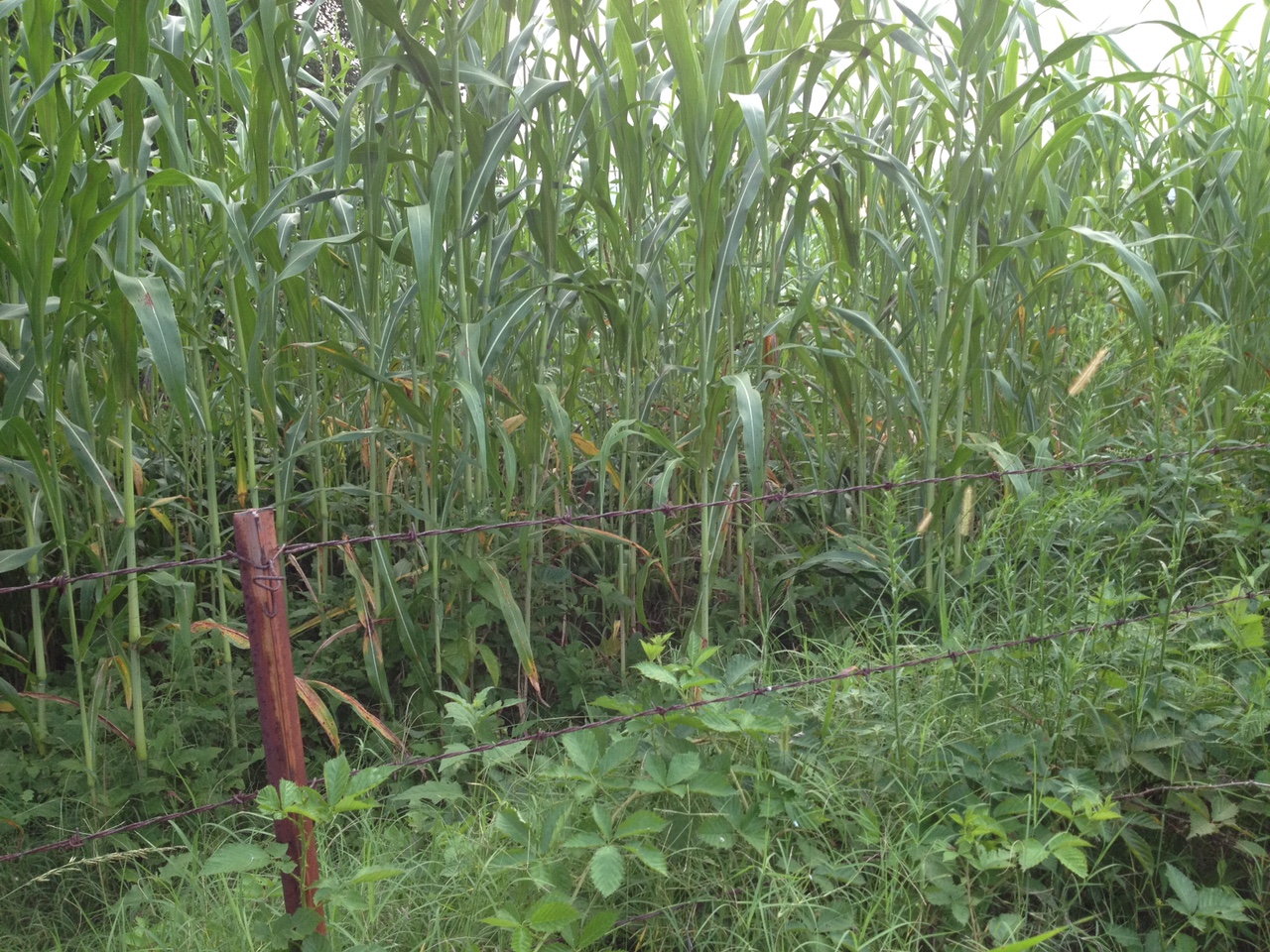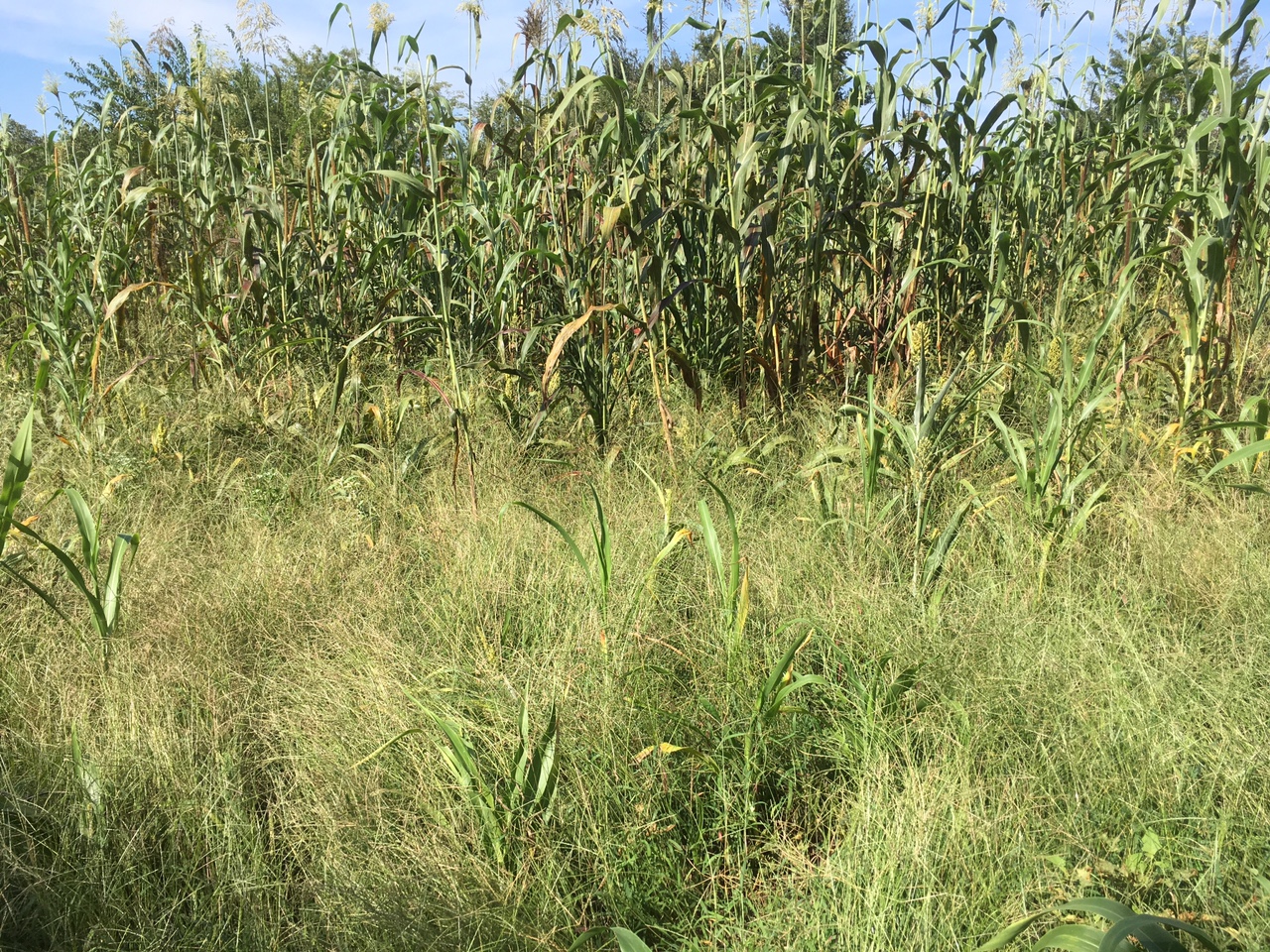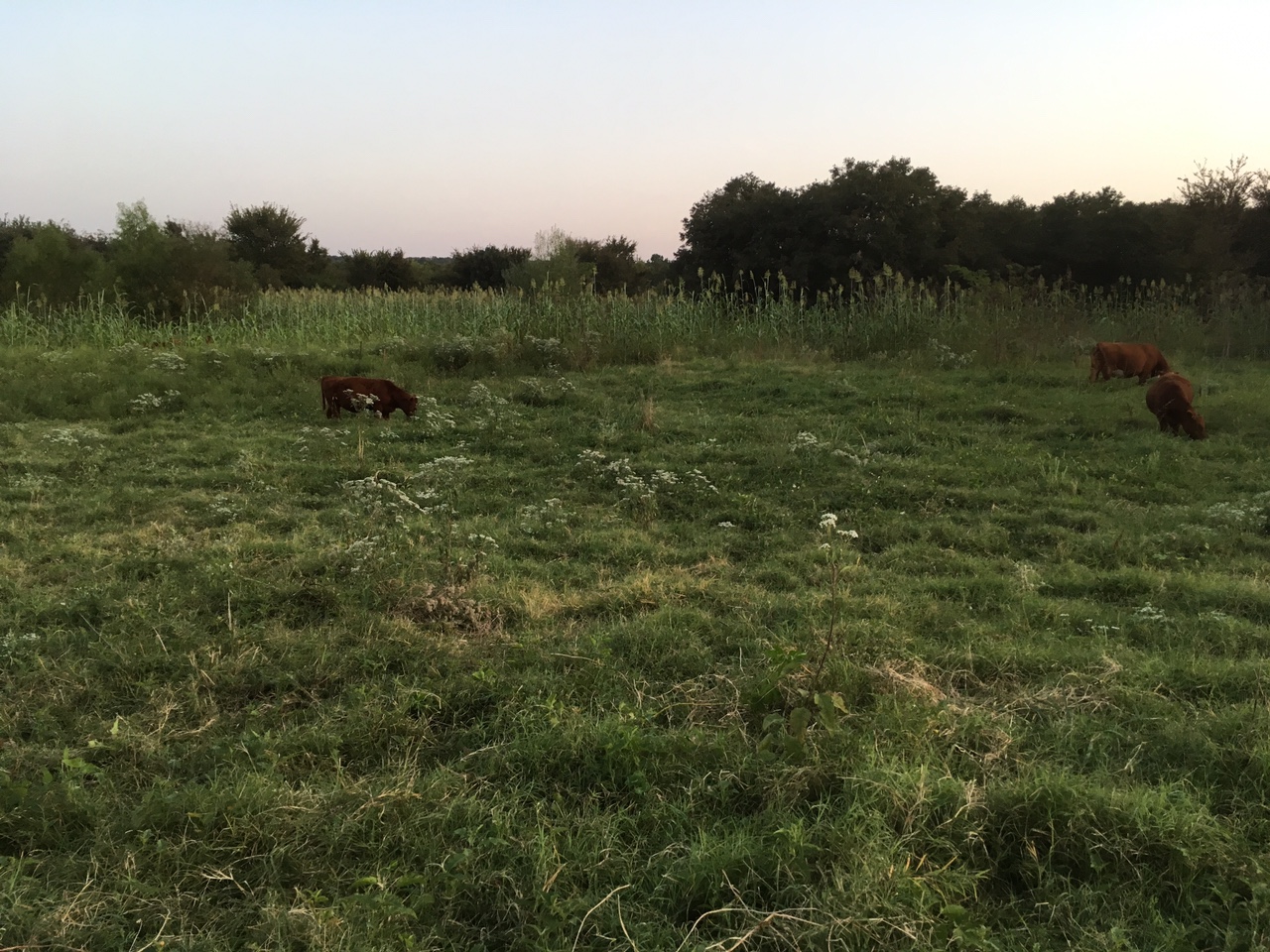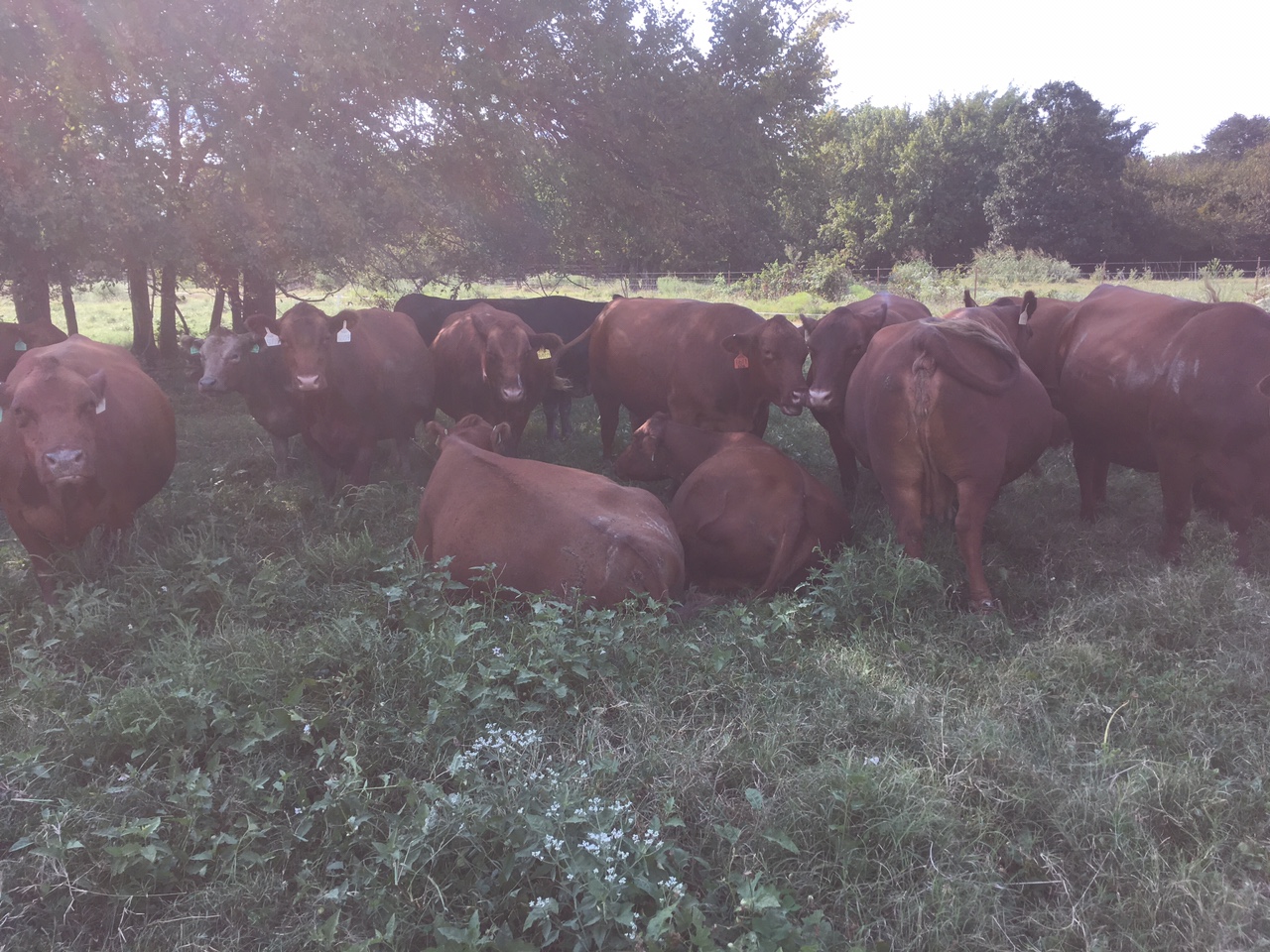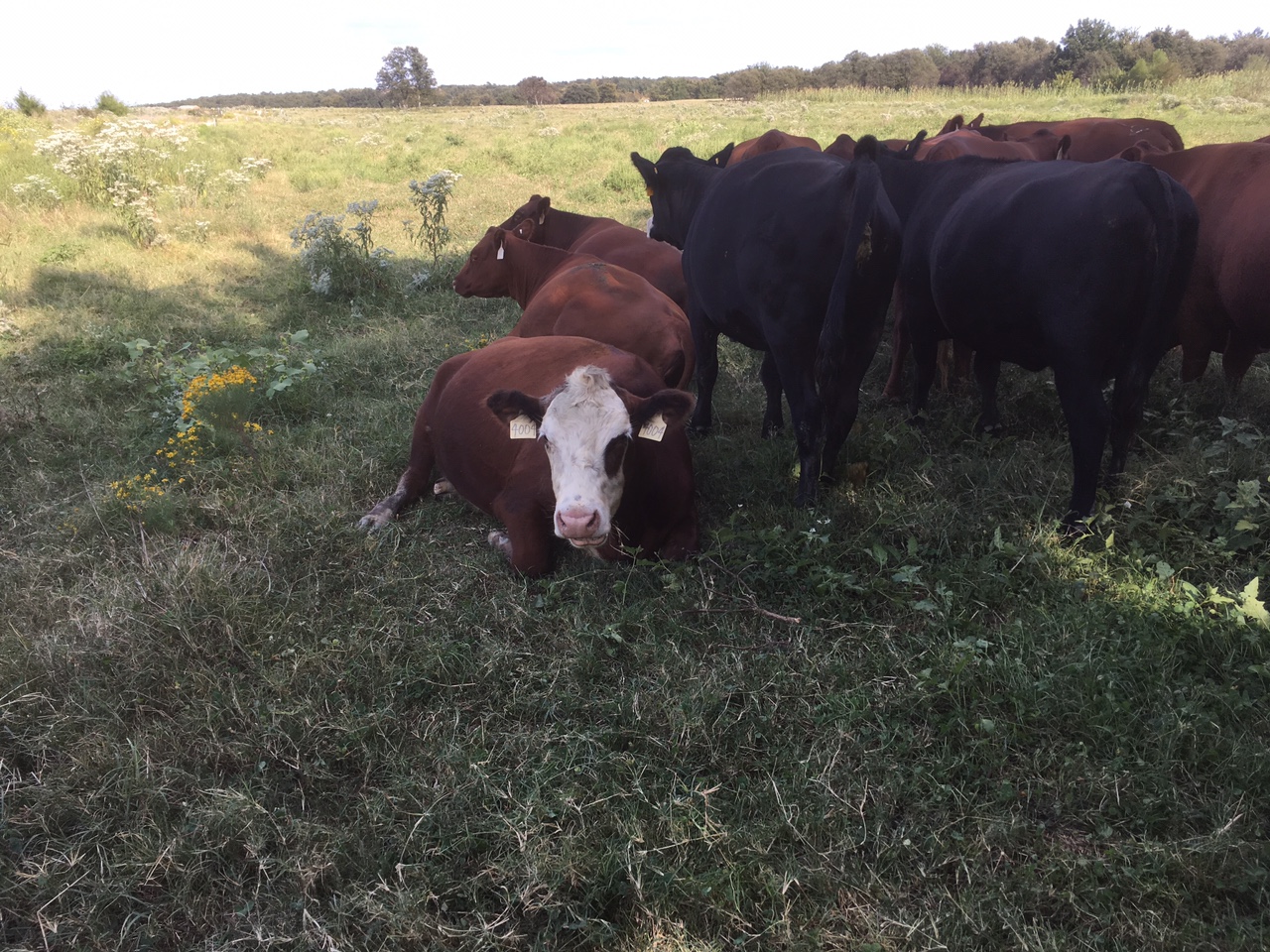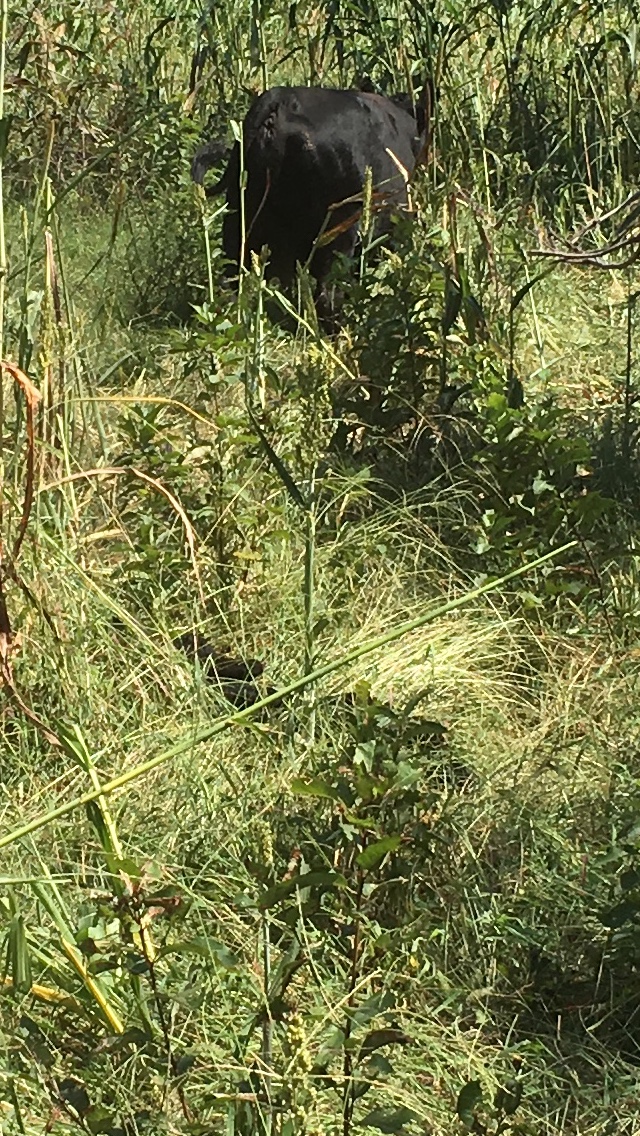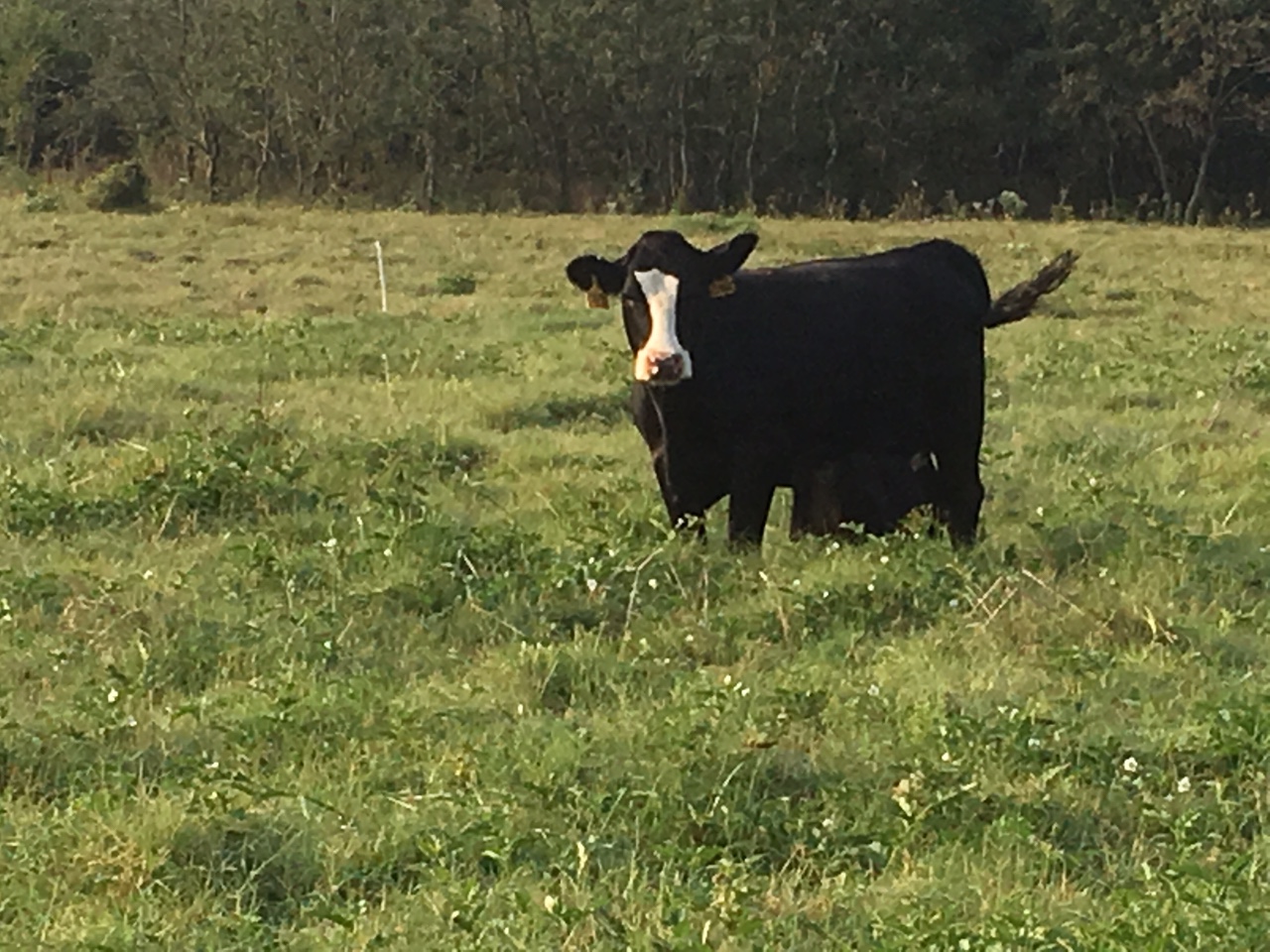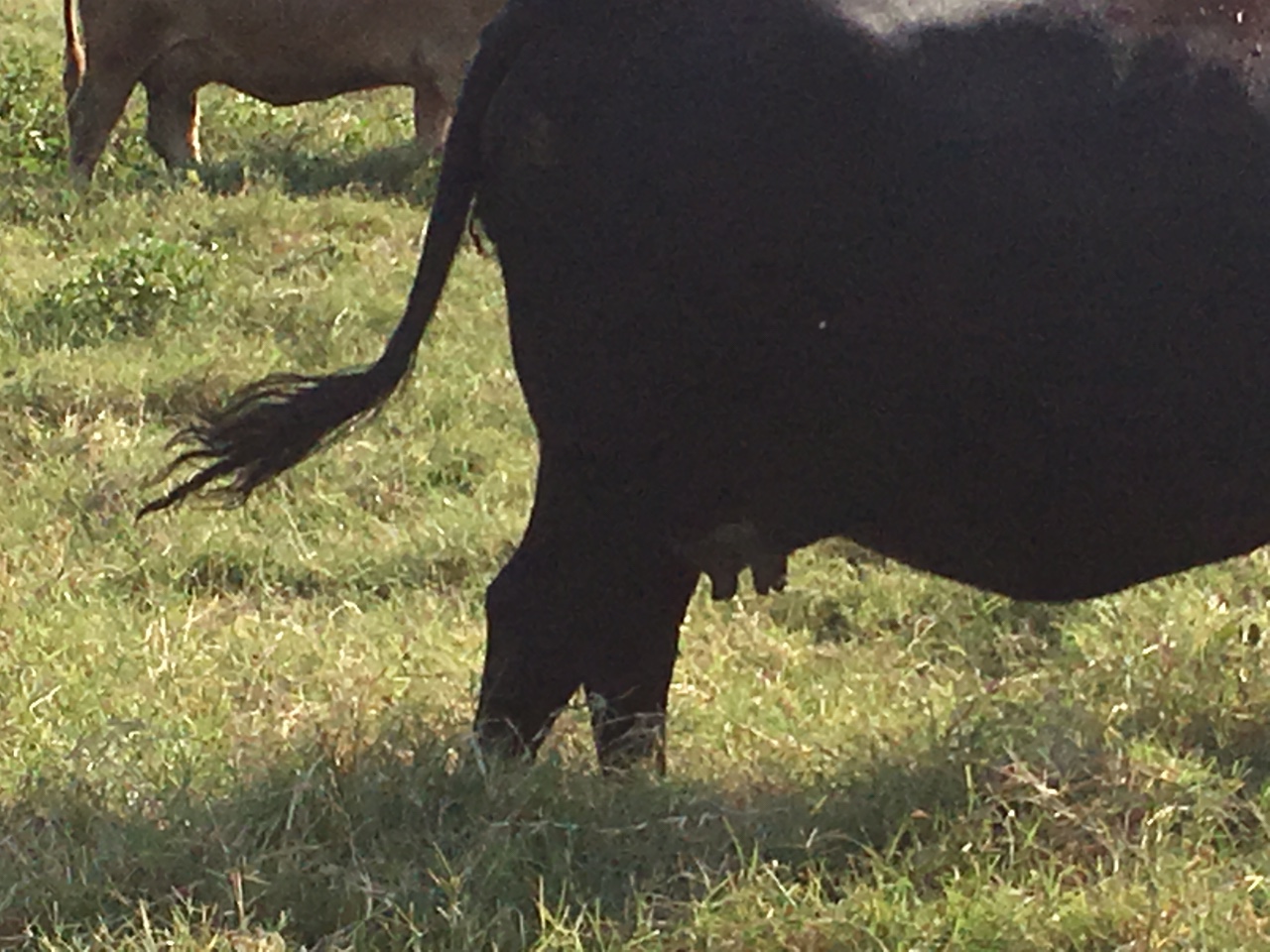50 d recovery on switchgrass since postfire grazing. What a hardy plant!
Ungrazed post fire growth behind the wire looks awesome. Giant paspalum coming in. It's one of the unsung heros of tall NWSG.....wide leaf.....short recovery. My heaviest steer made fast gains on paspalum, lespedeza and by sucking about 5 cows!
Patch burn grazing (foreground) showing higher forb density and shorter NWSG than ungrazed burn (background). But are the forbs wildlife beneficial? So many observations to ponder!
Greasy grass (purple top) is ready to graze. A mid-height NWSG.....upper left of pic.
I need to keep in mind that last year we ran cows through here 3-4 times.....to put pressure on NWSG and reduce fuel loading for fire break buffer. Not wise to hit a native area hard two years on a row.
We want to manage for NWSG in general....so are the other species (blue stems and Indian and spear-top)fully recovered in 50 d?
The answer is...NO....all NWSG are not fully recovered!
Due to our flexible grazing plan we have options on where to move the cow herd who was finishing up on the cover crops in brier project. Option 1) graze the rangeland knowing all NWSG are not recovered or 2) skip the native paddock and move to 80 d recovered tame pasture with clover? I chose second option to let NWSG express full potential And graze them as winter stockpile.
The tame stuff was thick...got extra days on it while leaving plenty leaf behind.....you think deer have crosshairs on clover regrowth there?....absolutely!
Breezed over 30 d recovered tame stuff after that as the next move would be more complicated than my son's time off work would allow. Our plan is also flexible in terms of available labor. Hitting the 30d stuff again will lessen mower power needed as a prep step to drill winter annual mix next month.....so the grazing plan allows flexibility in objectives also. Bermuda can be grazed on 14-28d recovery for best performance, but cattle will pick up a worm load.....don't do it very often!
Temps cooled and cows hit the 30 d stuff diffidently hard.....full as dog ticks....some dirty backsides from the lush growth...as expected. They are due to calve next month so 'flushing' is welcomed.
Moved them yesterday into our oldest paddocks which were 85 d recovered. Well pleased to see an increase in bluestem and other NWSG species. None of these were planted.....all the result of hoof impact and long recovery. Most NWSG benefit from 90+ d recovery in our area. This is second mesa ground and soil eroded during the dust bowl.....best to graze when soil moisture is available for warm season recovery...2.6" last week.....1.3" this week....that should do. The more paddocks you have the easier it is to hit or skip moisture sensitive areas!
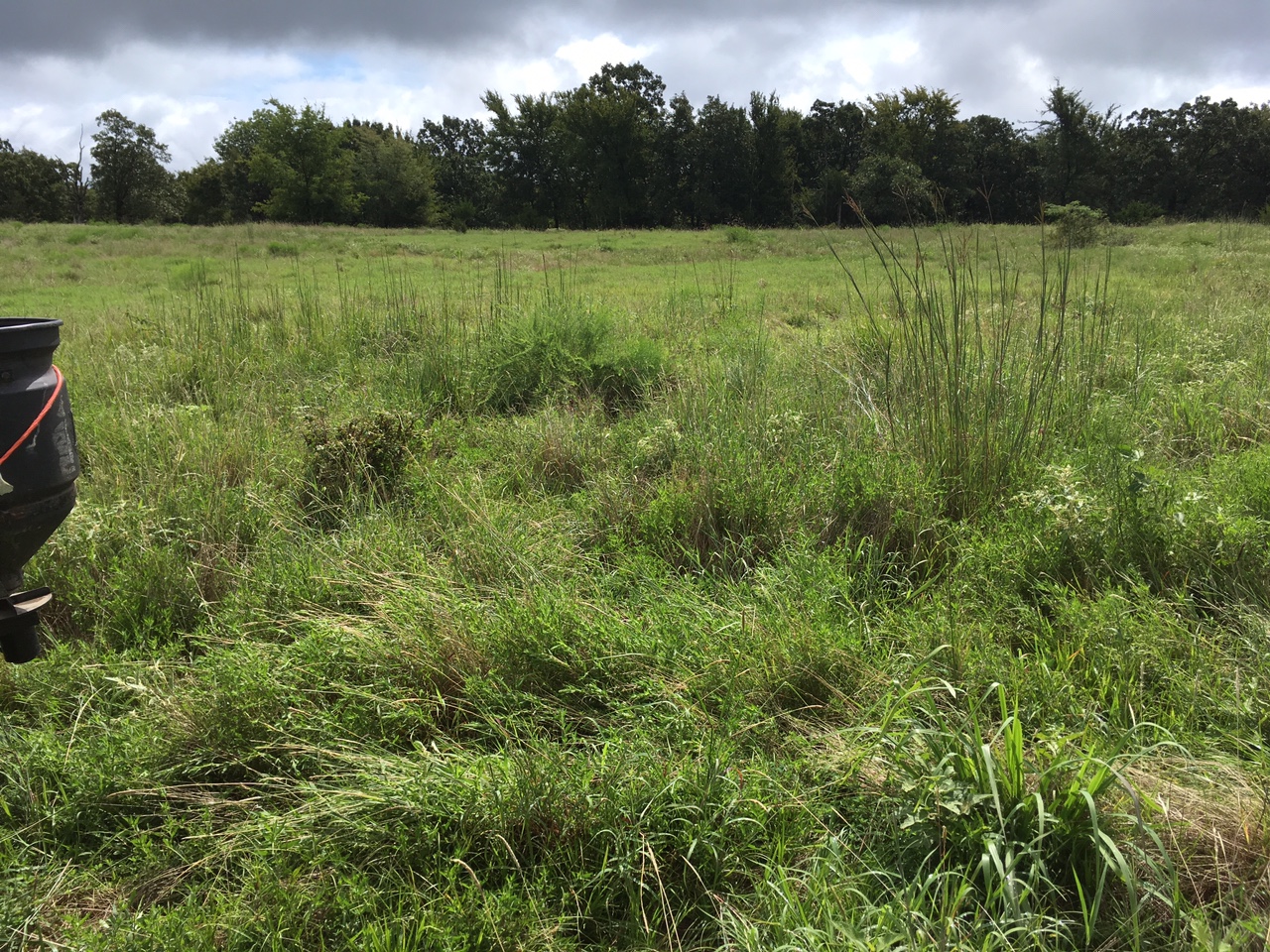
Pictorial tour ends on switchgrass seeded May of 2016 on new pond reclaim ground. Very poor and stony site. Matter of fact, I broke 4 drill springs seeding cover crop there in June. Won't do that again....broadcast and use cows from now on or unroll and feed hay there. The switch grass here was literally leveled last winter as this was where hay was fed to custom herd early Feb. Switchgrass is a tough and awesome plant for poor sites.....deep roots, good grazing, but it's recovery period is too short compared to most of our native species here. Switch, Johnson and purple top have recovery times more suited to tame pasture forages (i.e. 35-60 days). IMO they have the most potential there since most tame pastures lacks upper canopy structure.....but switch is slow to establish and susceptible to competition.
Upperstory switch with understory scribners panicum ( native C3 cool season perennial) and striate lespedeza. The understory could easily house a tame perennial clover once organic matter rises to 4-5%. Clovers tend to be shallow rooted thus requiring high SOM for persistence.
Just graze and observe.....for what you see is true...what you read may just be to get your dollars,
Doug
+
Sent from my iPhone using Tapatalk
